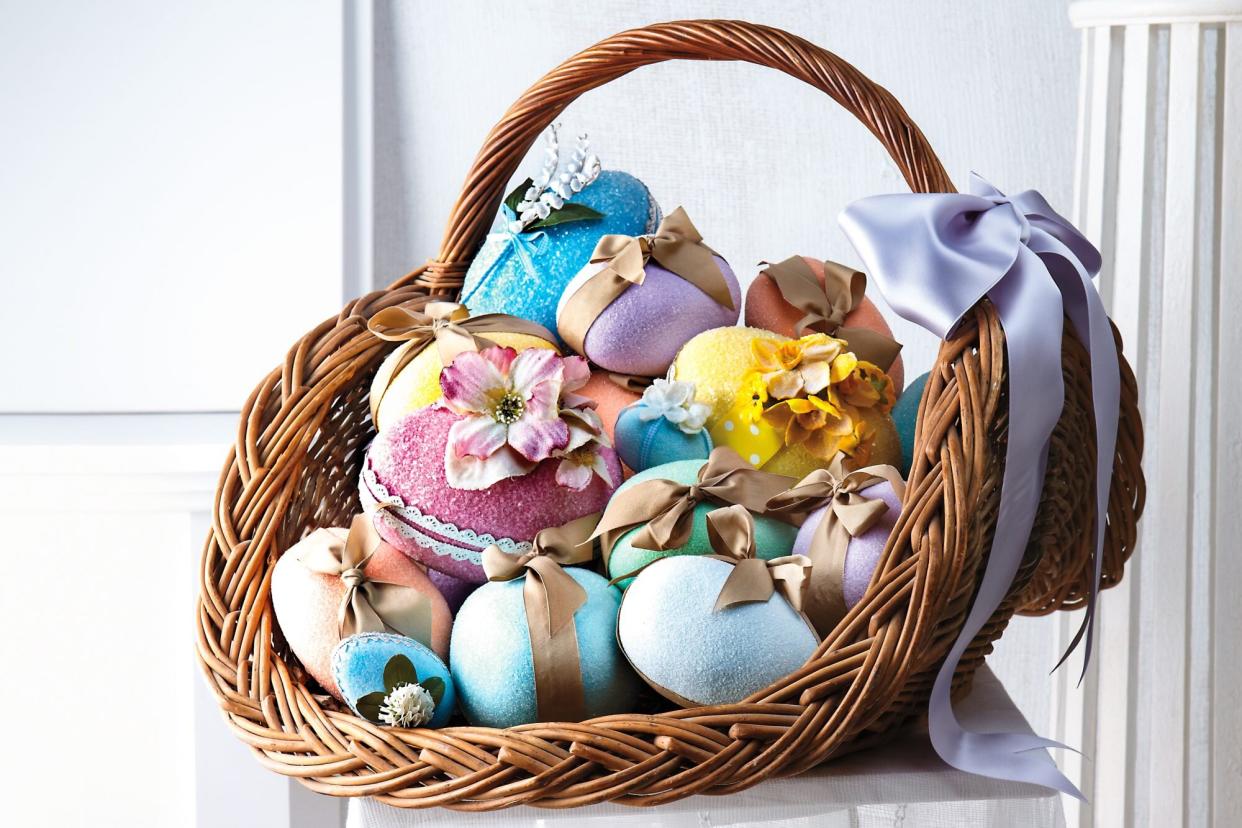The History of Easter Baskets (and All of the Treats Inside Them)

Stephan Abry
If you have experienced waking up to an Easter basket, you know how exciting the holiday's ritual can be. Filled with dyed eggs, rabbit-shaped chocolate, and candied treats, the baskets are a longstanding tradition come Easter. But have you ever wondered why we give and receive baskets filled with these motifs during the spring holiday? Believe it or not, the practice has a rich history that dates back centuries ago.
Related: 21 of Our Favorite DIY Easter Basket Ideas
Origin of Easter Baskets
To ancient cultures, Easter was known as the spring equinox—the time between seasons when the hours of day and night were equal. For farmers, this marked the highly anticipated transition from the dark days of winter to the sunny days of spring. It was a time for people to pray to their pantheon for a bountiful harvest. This included the Anglo-Saxon goddess of spring and fertility, Eostre.
According to The Reckoning of Time, an eighth century manuscript written by English monk and scholar Venerable Bede, many people held feasts in Eostre's honor. She was depicted cradling a woven basket in the crook of her arm. Thus, was the beginning of the Easter basket tradition.
Easter Basket Stuffers
As for the basket stuffers, like chocolate rabbits, eggs, and candied goods? It was all about symbolism. From medieval times, the hopping hare was a symbol of fertility. According to European folklore, a rabbit was said to leave a basket filled with colored eggs for children, and when settlers immigrated to America, they brought the story with them. Eggs (decorated or otherwise) have historically been mythological motifs for new life, also a common symbol of Easter.
Tradition of Exchanging Baskets
The tradition of exchanging baskets is said to be descended from early medieval Catholics. To celebrate the end of Lent, they would bring baskets of delicious goods to church in order to be blessed by a priest. All of these symbols of fertility were passed down through the ages—the bunny, the eggs, and the basket itself—to be reimagined into the Easter traditions we hold dear to us today.